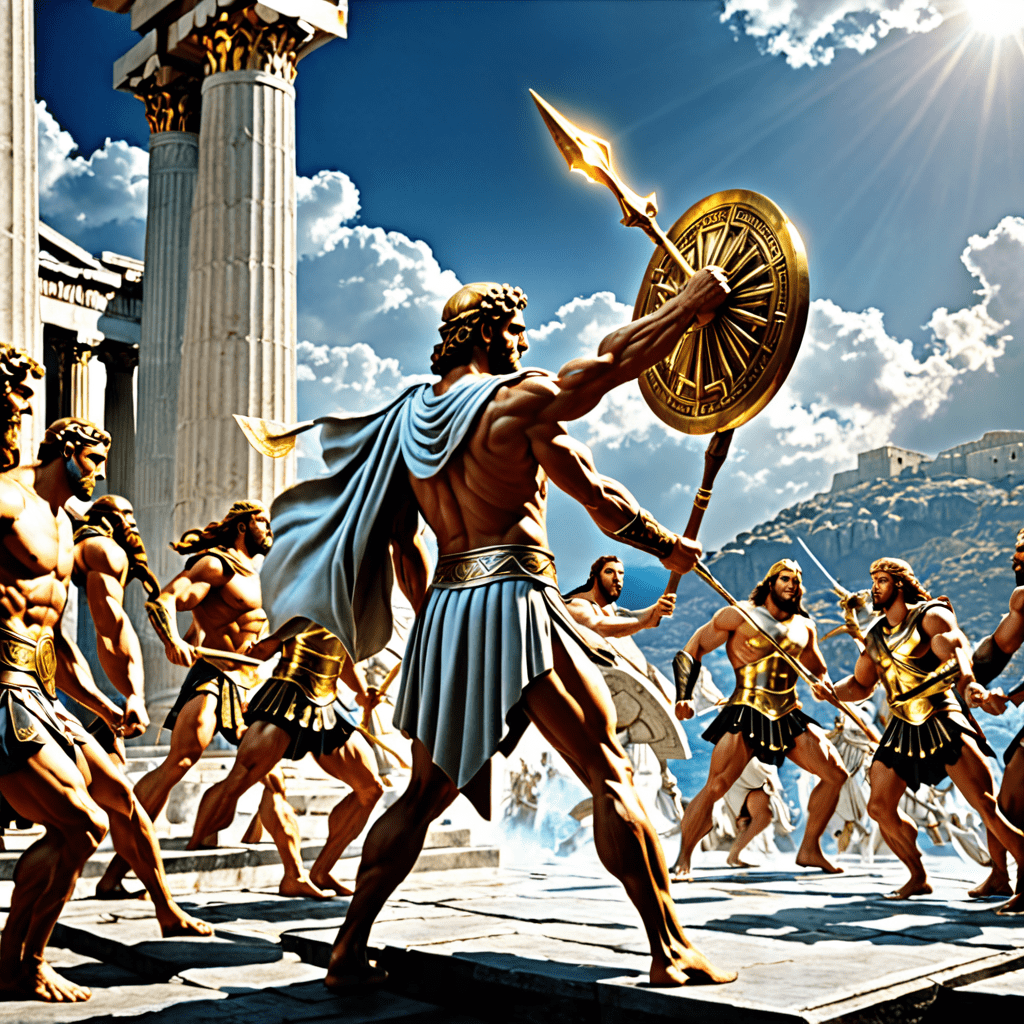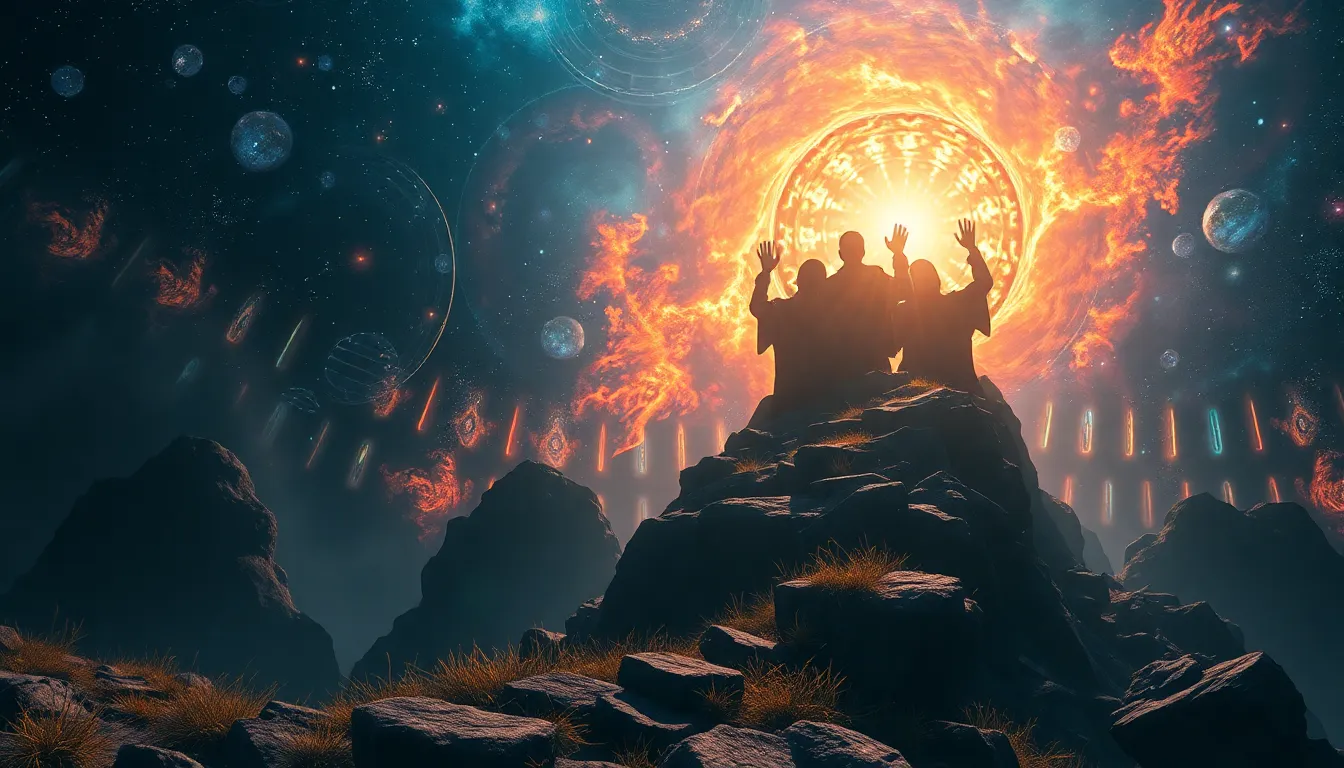Haumea: The Goddess of Fertility in Hawaiian Mythology
Haumea, in Hawaiian mythology, is a powerful goddess revered for her role in creation and her association with fertility. She represents the life-giving forces of nature, motherhood, and abundance. Her stories and myths have been passed down through generations, shaping the cultural identity and beliefs of the Hawaiian people. This article dives into the captivating world of Haumea, exploring her significance in Hawaiian mythology.
Haumea’s Role in Creation: The Birth of the Islands
Haumea, along with her siblings, played a vital role in the creation of the Hawaiian islands. According to Hawaiian creation myths, the islands were formed from the body parts of a great god or goddess who was killed by a rival. In some versions, Haumea herself is said to have been involved in this act of creation, either through her own actions or through the actions of her children.
Haumea's connection to creation is closely tied to her role as a fertility goddess. She represents the Earth's ability to give life and sustain it. The islands themselves are seen as a manifestation of her power, a testament to her role in bringing forth new life and shaping the world around her.
Haumea’s Attributes: Symbolism and Representation
Haumea is often depicted as a powerful and nurturing figure, embodying the strength and wisdom of a mother. Her attributes are symbolic of her power and influence. She's frequently associated with the following:
- The Kumara: Haumea is closely linked to the kumara, a type of sweet potato that is an important staple food in Hawaiian culture. The kumara symbolizes abundance, nourishment, and life, reflecting Haumea's role as a provider and a life-giver.
- The ʻŌʻio: The ʻŌʻio, a type of fish, is another important symbol associated with Haumea. The 'Ōʻio represents fertility and abundance in the ocean, highlighting Haumea's power over both land and sea.
- The Ipu: The Ipu, a gourd used for various purposes, is often linked to Haumea. The Ipu symbolizes fertility, creation, and the nurturing aspect of motherhood. It is believed to hold the power of Haumea within it.
- The Moon: The moon's cyclical nature is often connected to Haumea, representing the ongoing cycle of fertility and renewal.
Haumea and the Hawaiian Family: A Mother Goddess
Haumea is not only a creator goddess but also a mother goddess. She is seen as the ultimate provider and protector of her children. In Hawaiian mythology, Haumea is often depicted as the mother of many gods and goddesses, including the god of fire, the god of war, and the goddess of the ocean.
Her nurturing energy extends beyond her own children. She is seen as a mother figure to all Hawaiians, a symbol of the love, protection, and guidance that flows from a mother's heart. This aspect of her character emphasizes her role in the community and the importance of family in Hawaiian culture.
Haumea’s Influence on Agriculture and Childbirth
Haumea's influence extends beyond the realm of creation. She holds significant sway over agriculture and childbirth, both essential components of life in traditional Hawaiian society.
- Agriculture: Haumea is invoked for bountiful harvests and the prosperity of agricultural endeavors. Farmers would offer prayers and sacrifices to Haumea to ensure a successful growing season and abundant crops. The symbolic association of the kumara with Haumea highlights her connection to the land's fertility.
- Childbirth: Haumea is also invoked for safe and healthy childbirth. Women would seek her guidance and protection during pregnancy and labor. Her role as a mother goddess and her association with the Ipu (a symbol of fertility and creation) cemented her importance in childbirth rituals.
Haumea’s Sacred Sites and Rituals: Honoring the Goddess
Haumea's presence is deeply felt in the landscape of the Hawaiian Islands. Certain places hold a special significance as sacred sites dedicated to her, where Hawaiians would gather to perform rituals and pay homage to her power.
One prominent sacred site associated with Haumea is the Waimea Valley on the island of Oʻahu. This fertile valley, known for its abundance of water and vegetation, is considered to be a manifestation of Haumea's creative energy. The valley's lush landscape, with its waterfalls, streams, and verdant forests, reflects her life-giving force.
Rituals honoring Haumea were often performed in these sacred places. These rituals typically involved offerings of food, flowers, and chants, seeking her blessings for fertility, abundance, and well-being. The offerings were a way to show respect and gratitude for her power, while the chants helped to connect with her spirit and invoke her favor.
The practice of hula also played a crucial role in honoring Haumea. Many hula dances were dedicated to her, their graceful movements embodying her power and influence. The rhythmic movements of the dancers, accompanied by chants and music, served as a way to connect with Haumea's spirit and celebrate her life-giving energy.
Haumea and the Lunar Cycle: A Connection to Fertility
Haumea's connection to the moon is a profound one, reflecting the shared themes of cyclical renewal and fertility. Just as the moon waxes and wanes, dictating the tides and influencing the rhythms of life, so too does Haumea's power ebb and flow.
The moon's phases, particularly the new moon and the full moon, were significant events in the life of ancient Hawaiians, representing times of renewal and abundance. These phases were associated with the goddess Haumea, reflecting her role as a fertility goddess.
The new moon, symbolizing new beginnings and potential, was seen as a time to invoke Haumea's blessing for fertility and abundance. The full moon, with its radiant light, was seen as a time to celebrate the harvest and give thanks for the bounty received.
The moon's cyclical nature resonated deeply with the Hawaiians, aligning with their understanding of life's cyclical flow, from birth to death and rebirth. Haumea, as the goddess of fertility, embodied this cyclical process, reminding the people of the continuous renewal of life and the enduring power of nature's cycles.
Theories on Haumea’s Origins: Ancient Polynesian Roots
Haumea's story, like many other Polynesian myths, carries echoes of a shared cultural heritage that stretches across the Pacific. The goddess's name and her role as a fertility deity resonate with similar figures found in the mythologies of other Polynesian cultures.
For instance, the goddess Hina in the mythology of the Cook Islands and Tahiti shares striking similarities with Haumea. Hina is also a mother goddess associated with the moon and fertility, reflecting the common themes and beliefs that bind the Polynesian cultures together.
Haumea's origins are likely rooted in ancient Polynesian beliefs that have been shaped and adapted over centuries as different Polynesian groups migrated and settled across the Pacific. Her story, passed down through generations, has evolved and adapted to reflect the specific cultural contexts of each island group.
However, the core elements of her myth, her role as a fertility goddess and her connection to the moon, remain deeply embedded in the collective memory of the Pacific peoples, connecting them through a shared mythology and a collective understanding of the natural world.
Haumea and the Modern Day: Continuing Relevance in Hawaiian Culture
While Haumea's story is steeped in ancient tradition, her relevance continues to endure in modern Hawaiian culture. She remains a powerful symbol, representing the enduring values of family, community, and the interconnectedness of life.
Haumea's legacy is evident in the many traditions and practices that continue to be celebrated in contemporary Hawaii. The preservation of ancient knowledge and traditions, including the hula, the cultivation of the land, and the reverence for natural cycles, are all testaments to the enduring influence of the goddess.
The increasing recognition of indigenous knowledge and cultures globally has also led to a renewed interest in Haumea and her story. Her role as a powerful female deity, embodying the interconnectedness of life and the importance of respecting the natural world, resonates powerfully with contemporary concerns about climate change, environmental stewardship, and the preservation of cultural heritage.
Haumea's story continues to inspire and empower, reminding us of the importance of honoring our ancestors, respecting the natural world, and celebrating the life-giving forces that bind us all together.
Haumea’s Impact on Hawaiian Identity: A Legacy of Fertility and Creation
Haumea's story is more than just a myth; it's a reflection of the very essence of Hawaiian identity. Her role as a fertility goddess embodies the deep connection Hawaiians have to the land, the sea, and the cycle of life.
Her influence reaches every aspect of Hawaiian culture, from the traditional crafts and food to the values of family, community, and respect for nature. She embodies the strength and resilience of the Hawaiian people, reminding them of the enduring power of life and the importance of honoring their ancestors and their heritage.
Haumea's legacy is one of abundance, creativity, and renewal. She inspires Hawaiians to nurture their families, cultivate their land, and honor the ancient traditions that have sustained them for generations. Her story remains a powerful testament to the enduring spirit of the Hawaiian people and their deep connection to the natural world.
FAQ
- Q: What is Haumea’s connection to the moon?
A: Haumea's connection to the moon is often cited as representing the cyclical nature of fertility and renewal. The waxing and waning phases of the moon, much like Haumea's power, are seen as reflections of life's constant ebb and flow. - Q: What is the significance of kumara in Haumea's mythology?
A: Kumara (sweet potato) is a staple food in Hawaiian culture, and its significance in Haumea's mythology connects it to abundance, nourishment, and life. The kumara symbolizes Haumea’s role as a provider and a life-giver. - Q: How is Haumea’s story significant for modern Hawaiians?
A: Haumea’s story remains relevant for modern Hawaiians by signifying the values of family, community, and the interconnectedness of life. It inspires Hawaiians to honor ancient traditions, care for the land, and celebrate the life-giving forces of nature. - Q: What makes Haumea unique among other Polynesian deities?
A: While Haumea shares some similarities with other Polynesian deities like Hina, her specific attributes and role in creation and fertility make her distinct. Her association with the kumara and her sacred sites within the Hawaiian Islands make her a uniquely Hawaiian deity. - Q: How is Haumea’s story connected to the creation of the Hawaiian islands?
A: Hawaiian creation myths often connect Haumea to the islands’ formation, suggesting that she or her children were involved in shaping the land. This connection highlights her role as a creator goddess and reinforces her link to the islands’ fertility.



